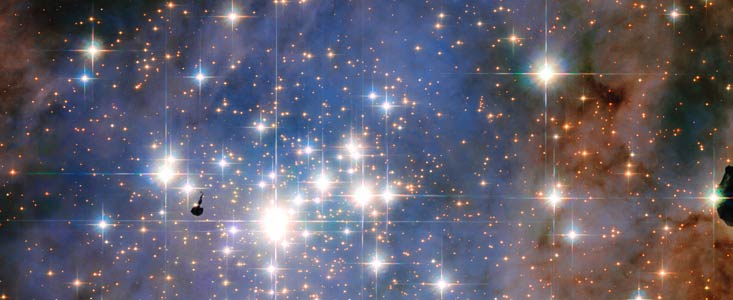Could Vanishing Stars Be A Clue To Alien Life?
Twinkle, twinkle, little star, how I wonder where you went

There are lots of ways to search for technologically advanced aliens. We can listen for them with radio telescopes. We can analyze the atmospheres of other plants to search for biosignatures, or look for their laser light shows.
So far we haven’t found any definitive sign of E.T. Maybe advanced aliens just don’t exist, or maybe they’re extremely rare … or maybe we’re just not looking hard enough.
Now, a team of scientists from Uppsala University in Sweden has proposed a new way to scan for advanced civilizations: by looking for disappearing stars or galaxies.
Why would an alien civilization make a star disappear? Perhaps because they’re harnessing energy from it using a Dyson sphere–a ball of solar panels around the star that blocks the light from our telescopes. Or maybe the aliens would want to hide their star from an enemy, the authors suggest.
In any case, the scientists analyzed something like 300,000 stars across three different data sets from three different time periods, looking for stars that seemed to disappear. They found 148 candidates.
Then they weeded out the false positives–the “stars” that were probably never there in the first place, the result of astronomical equivalents of lens flares. The team also removed false negatives–stars that looked like they disappeared, but in reality the telescope’s photometry was off.
Only one star survived the vetting process. But the authors aren’t certain that this star actually disappeared, because it looks faint in the second data set. “Improved image analysis is needed to determine with confidence whether it is a real detection,” they write.
A Dyson sphere that surrounds the star with solar panels could explain why the light is blocked, but then scientists would expect those solar panels to radiate a heat/infrared signature. They haven’t found such a signature.
The authors suggest a few alternative explanations, such as a binary star eclipsing itself, or a variable quasar whose light levels became too faint to detect. They write:
If scientists can’t find the missing star, it could suggest aliens are at work. Or, it could point to some exotic, previously undiscovered phenomenon, such as a wormhole swallowing the star. Either way, it sounds pretty cool.
The team hopes to track down more “vanishing” star candidates with help from citizen scientists, who could compare photos taken at different time periods.
[via New Scientist]